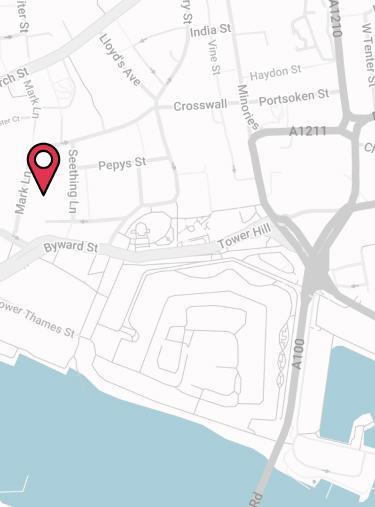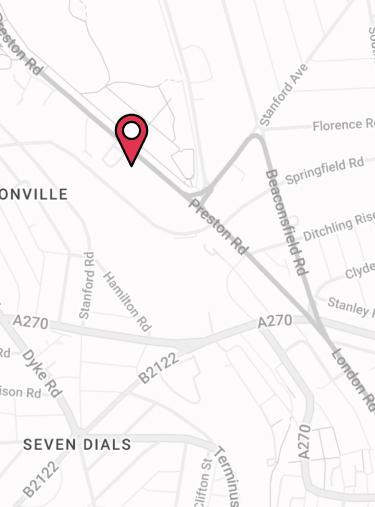
Inheritance Tax and Main Residence Nil-Rate Band
Inheritance tax is a tax on inherited assets passed down the generations. It replaced capital transfers tax in 1986.
If the sum of everything you own at the date of your death — known collectively as your ‘estate’ and including most property, possessions, shares, cash in the bank etc. — exceeds £325,000 as a single individual, you may have to pay inheritance tax on anything above this threshold.
How Much is Inheritance Tax?
You’re taxed at 40% on all taxable assets in your estate worth more than £325,000. This £325,000 threshold is known as your ‘nil-rate band’. Anything below this is normally free from inheritance tax; anything above this usually becomes taxable.
Imagine a single individual has an estate worth £500,000. They have an inheritance tax threshold of £325,000 so the first £325,000 of their estate is tax-free. The remainder — £175,000 — is taxable at 40% for a total tax bill of £70,000.
Since April 2017 there has been an additional threshold you can add to your nil-rate band know as the residence nil-rate band or the main residence nil-rate band. This is available for those passing their main residence to direct descendants (children, grandchildren, great-grandchildren, step children, adopted children etc.).
What is the Main Residence Nil-Rate Band?
- No estate worth £325,000 or less is currently required to pay any inheritance tax; however, the nil-rate band has been frozen at £325,000 since 2009, with no current plans to review this policy until at least 2021.
- According to data from the Land Registry, the average UK house price has increased by 46.9% in the decade between April 2009 and April 2019 alone, pushing a rising number of estates over the nil-rate band.
- Responding to the increasing proportion of estates being subject to IHT due to rising house prices, the government introduced a new nil-rate band which came into force in the 2017/18 tax year. This is known as the residence nil-rate band (RNRB).
- For inheritance tax purposes, the main residence nil-rate band is specifically to cut the IHT bills of those looking to pass on a family home to direct descendants by boosting the size an estate containing a family home can be before inheritance tax must be paid.
- The home does not have to be transferred into the descendants’ names — it will still qualify if it is sold by the personal representatives.
How Much is the Residence Nil-Rate Band?
When the main-residence nil-rate band was introduced in 2017/18, it was worth £100,000 per person. By 2020/21, the new main residence nil-rate band will be worth £175,000 per person — thereafter, it will rise alongside CPI inflation.
You can pass on your residence nil-rate band to a spouse or civil partner just as you can pass on your £325,000 nil-rate band, which means the last of a couple to die in the 2020/21 tax year will have an additional threshold of £350,000 to pass on before paying inheritance tax.
When this is added to the two available £325,000 nil-rate bands if everything is left to a spouse or civil partner, this provides a total figure of £1 million for the size of an estate containing a main residence passing to direct descendants before any inheritance tax is due by the 2020/21 tax year.
The Residence Nil Rate Band
| |
|---|---|
2016/17 | £100,000 |
2018/19 | £125,000 |
2019/20 | £150,000 |
2020/21 | £175,000 |
2021/22 | Rises with CPI inflation |
Important Note
Beware trusts and the residence nil-rate band. To qualify for this relief, the home must pass directly to descendants on death, which typically excludes a situation where the property is placed into most trusts, perhaps because the home has been left to direct descendants on condition that they must reach a certain age.
In such circumstances, the residence nil-rate band would not typically apply to the shares of those who are under the specified age at the date of death depending on the type of trust used.
Can the Residence Nil Rate Band Apply to a Second Home?
If you own two or more properties, the main residence nil-rate band can only be applied to one property, and it must be a property you’ve occupied personally at some point.
Your executors or personal representatives of your estate can choose which residence to apply the nil-rate band to after your death.
Transferring the Residence Nil-Rate Band to My Husband / Wife / Civil Partner
As with most matters of estate and inheritance tax planning, this is best done with a will drawn up by a specialist that clearly states your wishes. Dying without a will in place is referred to as dying ‘intestate’ and the distribution of your estate is then dictated by the laws of intestacy.
If you pass away without leaving a will, you lose control of how you want your estate distributed after your death.
With one of the cornerstones of IHT estate planning being carefully managed distribution to make full use of various allowances, losing this control complicates the process and could increase your inheritance tax bill.
The laws of intestacy are devolved to the administrations of Scotland and Northern Ireland. This means the rules of intestacy are different depending on whether the deceased lived in England and Wales, Scotland or Northern Ireland.
To take England and Wales as an example, if the estate is worth more than £250,000 and the deceased was married with children, the spouse is only entitled to the first £250,000. The remainder of the estate is split in half, with the spouse receiving half and the other half being split equally between any children (or put into a trust for any children under 18).
Assuming a couple have children and one of them passed away in the 2017/18 tax year, making full use of the deceased spouse’s transferable nil-rate band (£325,000) and main residence nil-rate band (£100,000) would require a transfer to the surviving spouse of £425,000. This is more than is permitted under the rules of intestacy.
Passing on the Residence Nil-Rate Band
Nigel and Margaret had been happily married for 45 years when, in June 2018, Nigel passed away.
On the date of his death, Nigel and Margaret’s family home was worth £600,000. They want to leave the home to their three grownup children. While Nigel could choose to leave his half of the property – worth £300,000 – to the children, he opts instead to protect the couple’s inheritance tax allowance by leaving his whole estate to Margaret.
This means that Margaret inherits not only 100% of Nigel’s main residence nil-rate band, but also his standard nil-rate band.
When Margaret dies in December 2021, by then the family’s home is worth £620,000. She also has other assets in her estate worth £480,000.
At the time of her death, Margaret’s main residence nil-rate band will be worth the £175,000 it reached in the 2020/21 tax year. The rules mean she inherited 100% of Nigel’s unused main residence nil-rate band as well, which is valued at the date of her death, not his, so is worth 100% of the £175,000 available in December 2021.
Main Residence Nil Rate Band Illustration
| |
|---|---|
Value of estate | £1,100,000 |
Less Margaret’s main residence nil-rate band | -£175,000 |
Less Nigel’s MRNRB | -£175,000 |
Value of estate outside main residence nil-rate band | £750,000 |
Less Margaret’s nil-rate band | -£325,000 |
Less Nigel’s nil-rate band | -£325,000 |
Estate subject to inheritance tax | £100,000 | £100,000 x 40% |
Inheritance Tax Advice
For impartial, specialist advice on inheritance tax, please don’t hesitate to get in touch. It’s a complicated area with a lot riding on it if you get it wrong, so that’s why it pays to consult a specialist.
If you would like to discuss your options with one of our specialists please do not hesitate to give us a call on 02084327334 or email help@drewberry.co.uk.
- You’ll speak to a dedicated specialist from start to finish
You will speak to a named specialist with a direct telephone and email. No more automated machines and no more being sent from pillar to post – you’ll have someone to speak to who knows you. - Benefit from our 5-star service
We pride ourselves on providing a 5-star service, as can be seen from our 2274 and growing independent client reviews rating us at 4.92 / 5.
- Topics
- Inheritance Tax
- Retirees
Contact Us
125-135 Preston Road
Brighton
BN1 6AF
Cookies
Drewberry™ uses cookies to offer you the best experience online. By continuing to use our website you agree to the use of cookies including for ad personalization.
If you would like to know more about cookies and how to manage them please view our privacy & cookie policy.








